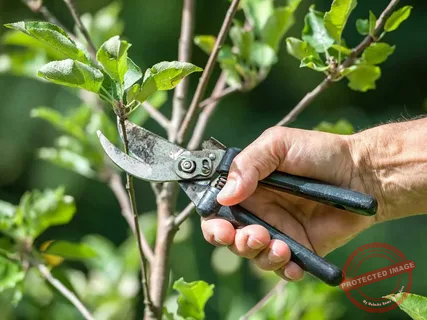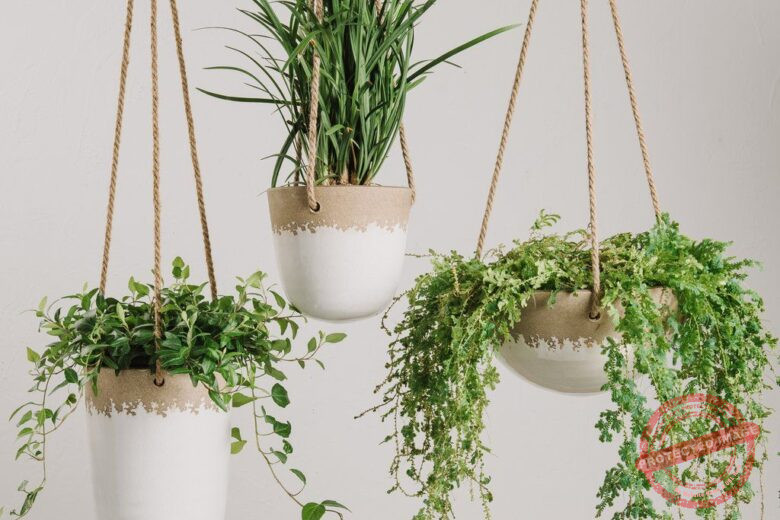How to Make Homemade Fertilizer with Banana Peel: A Detailed Guide by an Expert
In today’s world, sustainable living and organic farming have taken center stage as people become more aware of the need to reduce chemical inputs in agriculture and gardening. One of the simplest, yet highly effective organic fertilizers is banana peel fertilizer. I’ve been in the fertilizer production industry for decades, and I can attest that banana peels are a natural powerhouse when it comes to nourishing plants.
Banana peel fertilizer is rich in essential nutrients like potassium, phosphorus, calcium, magnesium, and trace elements that promote healthy plant growth. This guide will walk you through various methods to create homemade banana peel fertilizer and the science behind it, all while ensuring that the process is both effective and sustainable.
Why Banana Peels Are a Great Source of Fertilizer
Bananas are a staple in many households, and their peels are often discarded as waste. However, the peels contain a range of nutrients that are essential for plant growth. Here’s a closer look at the nutrient composition of banana peels and why they are a perfect candidate for organic fertilizer:
- Potassium (K): Banana peels are exceptionally rich in potassium, a key nutrient that enhances root growth, strengthens plant stems, and improves the overall health of the plant. Potassium is essential for the movement of water and nutrients within the plant and helps with the process of photosynthesis.
- Phosphorus (P): Phosphorus is another critical element found in banana peels. It plays a significant role in root development and promotes flowering and fruiting in plants. Phosphorus deficiency can lead to stunted plant growth and delayed maturity.
- Calcium (Ca): Calcium is vital for the structural integrity of plant cell walls. It helps improve soil structure, reduces soil compaction, and enhances water penetration. Calcium also promotes the uptake of other nutrients and can help prevent blossom-end rot in fruiting plants like tomatoes.
- Magnesium (Mg): Magnesium, found in small amounts in banana peels, is an essential component of chlorophyll, the pigment responsible for photosynthesis. It is also involved in enzyme activation and energy transfer within the plant.
- Other Trace Elements: Banana peels also contain trace elements like sulfur and zinc, which are crucial for enzyme function, protein synthesis, and overall plant health.
The beauty of banana peel fertilizer lies in its simplicity. It’s a free resource, readily available, and easy to use. Plus, it’s an eco-friendly alternative to synthetic fertilizers, which can damage the environment through runoff and soil degradation.
Methods to Make Banana Peel Fertilizer
There are several ways to turn banana peels into a potent fertilizer. In this guide, I’ll cover various methods, including composting, banana peel tea, dried banana peel powder, and direct soil application. Each method has its benefits, and you can choose one that suits your gardening style and plant needs.
1. Banana Peel Composting
Composting is one of the most effective ways to recycle organic waste, including banana peels, into nutrient-rich soil amendments. When banana peels decompose, they release their nutrients slowly, providing a steady supply of nutrients to plants.
Steps for Composting Banana Peels:
- Collect Banana Peels: Gather the banana peels over time and store them in a compost bin or pile. It’s important to chop the peels into smaller pieces to speed up the decomposition process.
- Layering in the Compost Bin: Add banana peels to your compost bin or pile. It’s crucial to maintain a proper carbon-to-nitrogen ratio in your compost. Banana peels are rich in nitrogen, so balance them with carbon-rich materials like dried leaves, straw, or shredded paper. A good rule of thumb is to maintain a 30:1 carbon-to-nitrogen ratio.
- Aerate the Compost: Turn the compost regularly to provide oxygen and facilitate decomposition. Aerating the compost also helps to distribute moisture evenly and prevent foul odors.
- Monitor Moisture Levels: The compost should be moist but not waterlogged. If it becomes too dry, add water, and if it’s too wet, add more dry carbon materials.
- Wait for Decomposition: Depending on the size of your compost pile and environmental conditions, it may take a few months for the banana peels to break down completely. The finished compost should be dark, crumbly, and smell earthy.
- Application: Once the compost is ready, apply it to your garden beds or mix it into potting soil. The slow-release nutrients from the composted banana peels will nourish your plants over time.
Composting is a long-term solution, but it provides the added benefit of recycling other organic waste materials alongside banana peels, creating a well-rounded, nutrient-rich soil amendment.
2. Banana Peel Fertilizer Tea
Banana peel fertilizer tea is a quick and easy method for extracting the nutrients from banana peels into a liquid form that can be applied directly to plants. This method is ideal for gardeners who want to provide their plants with an immediate nutrient boost.
Steps to Make Banana Peel Fertilizer Tea:
- Collect and Prepare the Peels: Take several banana peels and cut them into smaller pieces. The smaller the pieces, the faster the nutrients will leach out.
- Soak the Peels: Place the chopped banana peels in a large jar or bucket and fill it with water. Let the banana peels steep for 24 to 48 hours. This soaking process allows the water to absorb the nutrients from the peels.
- Strain the Liquid: After the soaking period, strain the liquid to remove the solid pieces of banana peel. The remaining liquid is your banana peel fertilizer tea.
- Dilute the Tea: The banana peel tea is quite potent, so it’s essential to dilute it before applying it to plants. Use a ratio of 1 part banana peel tea to 5 parts water.
- Application: Water your plants with the diluted banana peel tea. You can apply it to the base of the plant or as a foliar spray. It’s especially beneficial for flowering and fruiting plants like tomatoes, peppers, and roses, as the potassium in the tea helps promote healthy blooms and fruits.
Banana peel tea is a fantastic method for gardeners looking for a quick, organic fertilizer that’s easy to make and apply. Plus, the liquid form allows for immediate nutrient absorption by the plants.
3. Dried Banana Peel Powder
Dried banana peel powder is a concentrated form of banana peel fertilizer that can be stored and used as needed. This method is excellent for gardeners who want a longer-lasting fertilizer that’s easy to apply.
Steps to Make Dried Banana Peel Powder:
- Collect Banana Peels: Gather banana peels and allow them to dry. You can air-dry the peels in a sunny spot or use a dehydrator to speed up the process.
- Dry the Peels: Ensure the banana peels are completely dry and brittle. Any moisture left in the peels can cause mold growth during storage.
- Grind the Peels: Once the peels are thoroughly dried, grind them into a fine powder using a food processor or coffee grinder.
- Store the Powder: Store the dried banana peel powder in an airtight container. Keep it in a cool, dry place to prevent moisture from getting in.
- Application: Sprinkle the banana peel powder around the base of your plants or mix it into the soil before planting. The powder will slowly release nutrients into the soil as it breaks down.
Dried banana peel powder is a versatile and concentrated fertilizer. It’s easy to store and can be used throughout the growing season to provide a steady supply of nutrients to your plants.
4. Direct Soil Application
Another simple method is to apply banana peels directly to the soil. This method is particularly useful for gardeners who want to provide slow-release nutrients to their plants without going through the process of composting or making fertilizer tea.
Steps for Direct Soil Application:
- Chop the Banana Peels: Cut the banana peels into small pieces. The smaller the pieces, the faster they will decompose in the soil.
- Bury the Peels: Dig small holes or trenches around your plants and bury the chopped banana peels about 2 to 3 inches deep. This will prevent pests from being attracted to the decomposing peels.
- Cover with Soil: Cover the banana peels with soil to encourage decomposition. As the peels break down, they will release nutrients into the soil.
- Water the Area: Water the area where you’ve buried the peels to help initiate the decomposition process.
Direct soil application is a no-fuss way to recycle banana peels and enrich your garden soil. The buried peels will slowly break down over time, feeding your plants throughout the growing season.
Best Practices for Using Banana Peel Fertilizer
While banana peel fertilizer is an excellent organic option for enriching your garden, it’s important to use it wisely. Here are some best practices to ensure that your plants benefit fully from the nutrients in banana peels:
- Use as Part of a Balanced Fertilizer Regimen: Banana peel fertilizer is rich in potassium but lacks other essential nutrients like nitrogen. To ensure your plants receive a well-balanced diet, combine banana peel fertilizer with other organic fertilizers, such as compost, manure, or green manure, that provide nitrogen and other nutrients.
- Avoid Overuse: While banana peels are beneficial, overloading the soil with too much organic matter can lead to nutrient imbalances and slow plant growth. Use banana peel fertilizer in moderation, especially if you’re also using other organic amendments.
- Monitor Soil pH: Banana peels have a neutral to slightly acidic pH. If you’re applying banana peel fertilizer regularly, keep an eye on your soil’s pH to ensure it remains within the optimal range for your plants. Most garden plants thrive in slightly acidic to neutral soil (pH 6.0 to 7.0).
- Be Patient: Organic fertilizers like banana peel fertilizer release nutrients slowly. It may take some time for your plants to show visible improvements. Patience is key when working with organic gardening methods.
- Compost Combination: For best results, consider incorporating banana peels into your larger composting efforts. Combining banana peels with other compostable materials ensures a balanced breakdown of nutrients and a more comprehensive soil amendment.
Conclusion
As someone with extensive experience in fertilizer production, I can confidently say that banana peel fertilizer is a powerful, sustainable, and cost-effective solution for enriching garden soil. By using banana peels to make homemade fertilizer, you not only reduce waste but also provide your plants with essential nutrients that promote healthy growth, vibrant flowers, and bountiful harvests.
Whether you choose to compost banana peels, make banana peel tea, create dried banana peel powder, or apply them directly to the soil, each method offers its unique benefits. The key is to use these methods as part of a balanced organic fertilization strategy that supports long-term soil health and plant productivity.
Remember, gardening is an art as much as it is a science. Experiment with different methods, observe how your plants respond, and refine your approach over time. With banana peel fertilizer, you’re not just nourishing your plants—you’re contributing to a more sustainable and eco-friendly way of gardening. Happy gardening!



